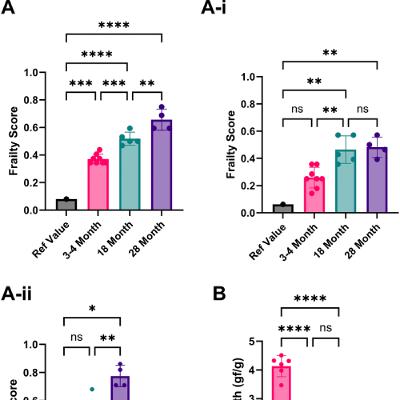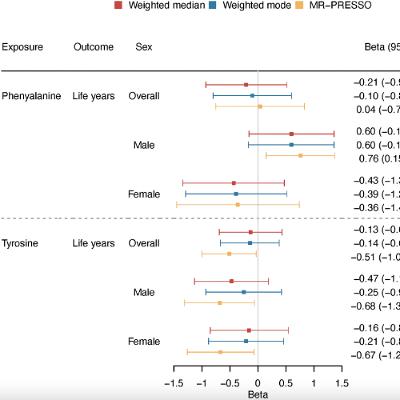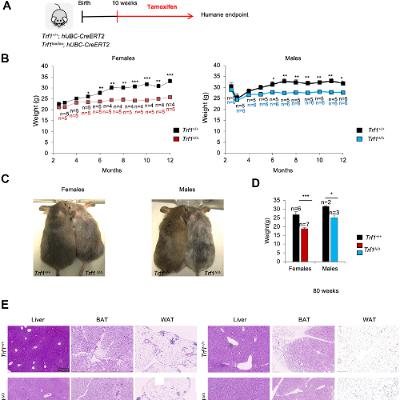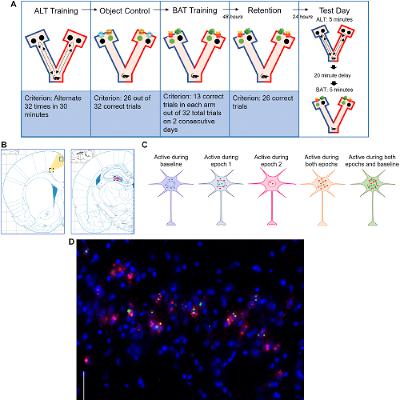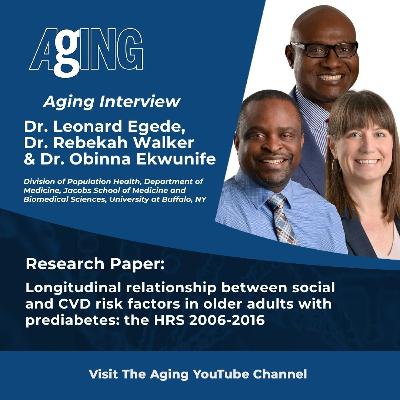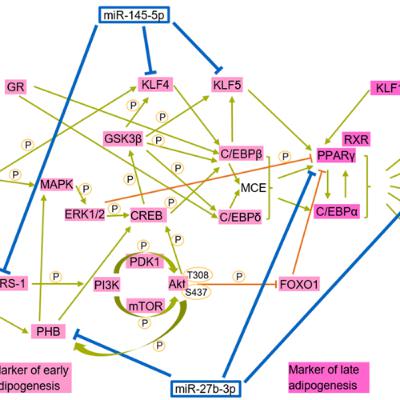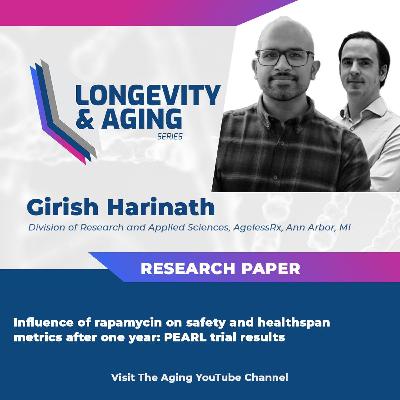Standardizing Frailty Indexes to Improve Preclinical Aging Research
Update: 2025-10-03
Description
BUFFALO, NY — October 3, 2025 — A new #research perspective was #published in Volume 17, Issue 9 of Aging-US on August 26, 2025, titled “Analysis of the current state of frailty indexes and their implementation for aging intervention studies.”
In this work, led by first author Oliver G. Frost from Loughborough University alongside corresponding authors Abdelhadi Rebbaa and Amit Sharma, from the Lifespan Research Institute, the authors explore growing concerns about the lack of standardization in how frailty is measured in rodent aging studies, which may limit the development of effective interventions targeting age-related decline.
Frailty, a key indicator of deteriorating health in older adults, is increasingly assessed in preclinical models using frailty indexes (FIs). These indexes quantify health deficits, such as reduced mobility, cognitive decline, or physical weakness. However, this perspective highlights that FI methodologies vary significantly across studies, from the selection of parameters to the cut-off thresholds used, resulting in inconsistent outcomes that affects reproducibility and translational value.
The authors reviewed 18 rodent studies and found substantial variation in how frailty is defined and measured. Some FIs rely on clinical observations, such as appearance or beahaviour, while others focus on physical performance metrics like grip strength or locomotion. In several cases, applying different FIs to the same group of animals produced contradictory results, underscoring the importance of harmonized protocols.
To illustrate these issues, the researchers applied an 8-item FI to mice of different ages and found that even young mice were sometimes scored as frail, depending on the scoring method and reference values. This finding emphasizes the need for consistent baselines and controlled environments, especially when comparing across studies. The authors recommend using each animal as its own baseline in longitudinal studies, a strategy that enhances reliability without adding significant cost.
“Sex as a biological variable in FIs is an important consideration, as there is a known difference between male and female frailty onset and progression.”
The authors also discuss emerging automated tools, such as video-based open-field testing, which can reduce observer bias and improve reproducibility. In the future, broader health indicators, such as cognition, circadian rhythms, social behavior, and body composition, may further enhance frailty assessments.
Overall, this work underscores the urgent need for standardized, transparent, and reproducible methods for evaluating frailty in preclinical aging studies. Improved consistency in frailty scoring will better inform the development of healthspan-extending therapies and enhance the translational relevance of animal models.
DOI - https://doi.org/10.18632/aging.206307
Corresponding authors - Abdelhadi Rebbaa - rebbaa@gmail.com, and Amit Sharma - amit.sharma@sens.org
Abstract video - https://www.youtube.com/watch?v=eha3XA9LyWA
Sign up for free Altmetric alerts about this article -
https://aging.altmetric.com/details/email_updates?id=10.18632%2Faging.206307
Subscribe for free publication alerts from Aging - https://www.aging-us.com/subscribe-to-toc-alerts
Keywords - aging, frailty, rodents, frailty index, phenotype
To learn more about the journal, please visit our website at https://www.Aging-US.com and connect with us on social media at:
Facebook - https://www.facebook.com/AgingUS/
X - https://twitter.com/AgingJrnl
Instagram - https://www.instagram.com/agingjrnl/
YouTube - https://www.youtube.com/@AgingJournal
LinkedIn - https://www.linkedin.com/company/aging/
Bluesky - https://bsky.app/profile/aging-us.bsky.social
Pinterest - https://www.pinterest.com/AgingUS/
Spotify - https://open.spotify.com/show/1X4HQQgegjReaf6Mozn6Mc
MEDIA@IMPACTJOURNALS.COM
In this work, led by first author Oliver G. Frost from Loughborough University alongside corresponding authors Abdelhadi Rebbaa and Amit Sharma, from the Lifespan Research Institute, the authors explore growing concerns about the lack of standardization in how frailty is measured in rodent aging studies, which may limit the development of effective interventions targeting age-related decline.
Frailty, a key indicator of deteriorating health in older adults, is increasingly assessed in preclinical models using frailty indexes (FIs). These indexes quantify health deficits, such as reduced mobility, cognitive decline, or physical weakness. However, this perspective highlights that FI methodologies vary significantly across studies, from the selection of parameters to the cut-off thresholds used, resulting in inconsistent outcomes that affects reproducibility and translational value.
The authors reviewed 18 rodent studies and found substantial variation in how frailty is defined and measured. Some FIs rely on clinical observations, such as appearance or beahaviour, while others focus on physical performance metrics like grip strength or locomotion. In several cases, applying different FIs to the same group of animals produced contradictory results, underscoring the importance of harmonized protocols.
To illustrate these issues, the researchers applied an 8-item FI to mice of different ages and found that even young mice were sometimes scored as frail, depending on the scoring method and reference values. This finding emphasizes the need for consistent baselines and controlled environments, especially when comparing across studies. The authors recommend using each animal as its own baseline in longitudinal studies, a strategy that enhances reliability without adding significant cost.
“Sex as a biological variable in FIs is an important consideration, as there is a known difference between male and female frailty onset and progression.”
The authors also discuss emerging automated tools, such as video-based open-field testing, which can reduce observer bias and improve reproducibility. In the future, broader health indicators, such as cognition, circadian rhythms, social behavior, and body composition, may further enhance frailty assessments.
Overall, this work underscores the urgent need for standardized, transparent, and reproducible methods for evaluating frailty in preclinical aging studies. Improved consistency in frailty scoring will better inform the development of healthspan-extending therapies and enhance the translational relevance of animal models.
DOI - https://doi.org/10.18632/aging.206307
Corresponding authors - Abdelhadi Rebbaa - rebbaa@gmail.com, and Amit Sharma - amit.sharma@sens.org
Abstract video - https://www.youtube.com/watch?v=eha3XA9LyWA
Sign up for free Altmetric alerts about this article -
https://aging.altmetric.com/details/email_updates?id=10.18632%2Faging.206307
Subscribe for free publication alerts from Aging - https://www.aging-us.com/subscribe-to-toc-alerts
Keywords - aging, frailty, rodents, frailty index, phenotype
To learn more about the journal, please visit our website at https://www.Aging-US.com and connect with us on social media at:
Facebook - https://www.facebook.com/AgingUS/
X - https://twitter.com/AgingJrnl
Instagram - https://www.instagram.com/agingjrnl/
YouTube - https://www.youtube.com/@AgingJournal
LinkedIn - https://www.linkedin.com/company/aging/
Bluesky - https://bsky.app/profile/aging-us.bsky.social
Pinterest - https://www.pinterest.com/AgingUS/
Spotify - https://open.spotify.com/show/1X4HQQgegjReaf6Mozn6Mc
MEDIA@IMPACTJOURNALS.COM
Comments
In Channel

